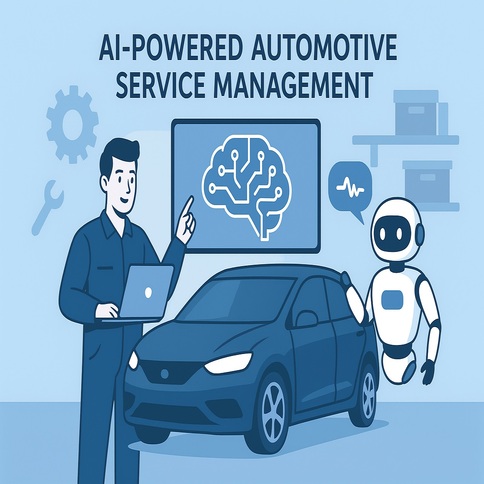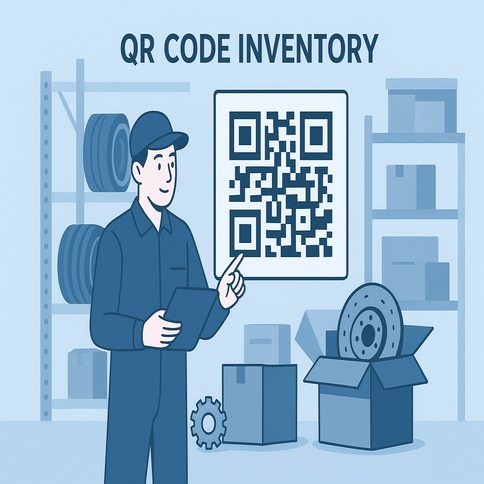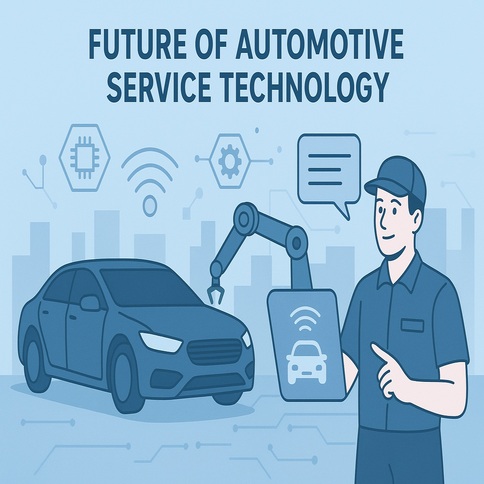Smart Service Center Implementation: Modernizing Your Automotive Business
Implementing smart technologies in your automotive service center is essential for staying competitive in today's market. Smart service centers leverage advanced technologies to streamline operations, enhance customer experience, and maximize profitability.
What Makes a Service Center "Smart"?
A smart service center integrates various technologies to create an interconnected ecosystem that optimizes every aspect of the business.
Key Smart Technologies
- IoT Sensors: Monitor equipment status and predict maintenance needs
- AI-Powered Diagnostics: Advanced vehicle analysis and problem detection
- Mobile Integration: Real-time communication between technicians and customers
- Automated Scheduling: Intelligent appointment booking and resource allocation
- Predictive Analytics: Data-driven insights for business optimization
Benefits of Smart Implementation
Operational Efficiency
- Automated Workflows: Reduce manual tasks and human error
- Real-Time Monitoring: Track service progress and equipment status
- Resource Optimization: Better allocation of technicians and equipment
- Predictive Maintenance: Prevent equipment failures before they occur
Enhanced Customer Experience
- Transparent Communication: Real-time updates and service tracking
- Faster Service: Streamlined processes reduce wait times
- Personalized Service: AI-driven recommendations and custom solutions
- Digital Convenience: Online booking, payments, and service history
Business Growth
- Data-Driven Decisions: Analytics inform strategic planning
- Increased Capacity: Handle more customers with same resources
- New Revenue Streams: Offer advanced services and premium options
- Competitive Advantage: Stand out from traditional service centers
Implementation Roadmap
Phase 1: Foundation (Months 1-3)
#### Assessment and Planning
- Current State Analysis: Evaluate existing systems and processes
- Technology Audit: Identify gaps and opportunities
- Budget Planning: Allocate resources for smart implementation
- Team Training: Prepare staff for new technologies
#### Basic Smart Features
- Digital Service Records: Replace paper-based documentation
- Customer Portal: Online booking and service tracking
- Mobile Apps: Technician and customer applications
- Basic Analytics: Performance tracking and reporting
Phase 2: Advanced Integration (Months 4-6)
#### IoT Implementation
- Equipment Sensors: Monitor machinery and vehicle systems
- Environmental Controls: Smart climate and lighting systems
- Security Systems: Advanced surveillance and access control
- Energy Management: Optimize power consumption
#### AI and Automation
- Diagnostic AI: Intelligent vehicle problem detection
- Predictive Analytics: Forecast service needs and trends
- Automated Scheduling: Smart appointment optimization
- Quality Control: AI-powered service verification
Phase 3: Full Optimization (Months 7-12)
#### Advanced Features
- Machine Learning: Continuous improvement through data analysis
- Advanced Analytics: Deep insights into business performance
- Integration Ecosystem: Connect all systems seamlessly
- Custom Solutions: Tailored features for specific needs
Key Technologies for Smart Service Centers
Internet of Things (IoT)
- Vehicle Diagnostics: Real-time monitoring of vehicle systems
- Equipment Monitoring: Track machinery performance and maintenance
- Environmental Sensors: Monitor temperature, humidity, and air quality
- Asset Tracking: Real-time location and status of tools and parts
Artificial Intelligence
- Predictive Maintenance: Forecast equipment failures
- Customer Behavior Analysis: Understand service patterns and preferences
- Dynamic Pricing: Optimize pricing based on demand and capacity
- Quality Assurance: Automated service quality verification
Mobile Technology
- Technician Apps: Mobile tools for field service
- Customer Apps: Self-service options and real-time updates
- Management Dashboards: Real-time operational insights
- Communication Tools: Seamless team and customer communication
Cloud Computing
- Scalable Infrastructure: Handle growing data and user demands
- Remote Access: Manage operations from anywhere
- Data Security: Enterprise-grade protection and backup
- Integration Platform: Connect various systems and applications
Implementation Best Practices
Change Management
- Stakeholder Engagement: Involve all team members in the process
- Gradual Rollout: Implement changes in phases to minimize disruption
- Training Programs: Comprehensive education for all users
- Support Systems: Provide ongoing assistance and troubleshooting
Data Management
- Data Integration: Connect all systems for unified information
- Quality Control: Ensure data accuracy and consistency
- Security Measures: Protect sensitive customer and business data
- Compliance: Meet industry regulations and standards
Performance Monitoring
- Key Metrics: Track efficiency, customer satisfaction, and profitability
- Regular Reviews: Analyze performance and identify improvement areas
- Continuous Optimization: Refine processes based on data insights
- Benchmarking: Compare performance against industry standards
Expected Outcomes
By implementing smart technologies, service centers can expect:
- 40-60% improvement in operational efficiency
- 30-50% increase in customer satisfaction
- 25-40% reduction in operational costs
- 50-70% improvement in service delivery speed
Conclusion
Smart service center implementation is not just about adopting new technologies—it's about transforming your business to be more efficient, customer-focused, and profitable. By following a structured implementation approach and focusing on technologies that align with your business goals, you can successfully modernize your automotive service center and gain a significant competitive advantage in the market.


